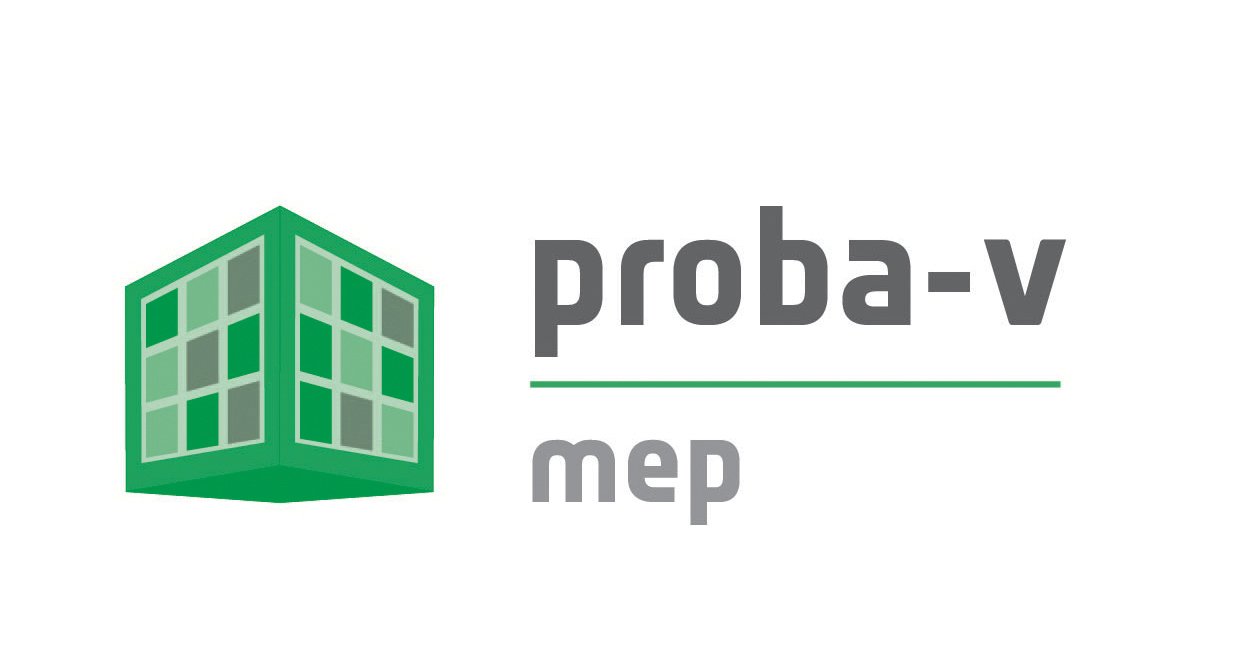About SPAR@MEP
SPAR@MEP aims to derive a consistent SPOT-VEGETATION and PROBA-V Aerosol and Surface Reflectance long-term data record in the PROBA-V Mission Exploitation Platform (MEP). The projects deliverables will consist on a Long Term Regional Data Record of Aerosol Optical Thickness (AOT) and Bidirectional Reflectance Factor(BRF) at 1Km of resolution over Europe for year 2019 and on a global processing of the entire Vegetation/PROBA-V archive at a spatial resolution of 5km. The target processing facility will be the Proba-V MEP. The radiometric accuracy and multi-temporal stability of the considered long-term data record, which was acquired with three different radiometers (SPOT-4, SPOT-5 and Proba-V), should be carefully assessed as a first verification step for the project. Furthermore, the processing performances should be significantly improved in order to sustain the mission reprocessing. To this end, the current plan is to exploit multi-cores CPU, or, alternatively, the GPU technology. Both parallel processing with CPU multi-cores and GPU servers are available on the MEP to support this project.
The comprehensive PV-LAC feasibility study demonstrated the possibility to apply the CISAR algorithm on PROBA-V data for the joint retrieval of surface reflectance and aerosol optical properties. On top of that, under the conxtext of the CIRCAS study the CISAR algorithm has been modified to also retrieve cloud optical thickness and can therefore can be run without the need of an external cloud mask.
Luffarelli et al. (2016) have stressed the important daily variations of the aerosol Jacobian from SEVIRI observations resulting from the change in scattering angles. These changes represent the major challenge to be solved to derive a consistent hourly aerosol product from SEVIRI observations. As can be seen on Figure 1, most of Africa, Mediterranean Sea and Middle East are observed simultaneously by both SEVIRI instruments, i.e, with different scattering angles. Luffarelli and Govaerts (2019) have already demonstrated the capability of CISAR to be applied on different satellite data, but not simultaneously. The major scientific challenge of this project will be the simultaneous processing of two different satellite over the common area data with the CISAR algorithm. The elaboration of a consistent observation vector composed of two different radiometers has never been performed so far. It is a very important development milestone as it will pave the way to the simultaneous processing of observations acquires by various radiometers with the CISAR algorithm.
This project includes the following activities: • Input Data Preparation. The purpose of the WP is to acquire all satellite and ancillary data needed for the generation of the hourly dust product and to project them in a consistent spatial and temporal grid. SEVIRI data will be harmonized using Rayference method developed over Libya-4 and used for the calibration correction of SLSTR. This activity is important to secure the radiometric consistency between two sensors. The SEVIRI data will finally be projected on a common grid. • Algorithm adaptation. The CISAR algorithm and the GEDAP processing environment will be improved to be able to process simultaneously, i.e., as part of single observation vector, two satellite data. Currently CISAR and GEDAP are only capable of processing data acquired by a single instrument, where each pixel has the same spectral dimension and geometry of acquisition and illumination. • Dust Product Generation. The GEDAP environment will be used for the generation of the hourly aerosol product. Dust information will be derived from that information. A minimum of four months selected during the dust season will be processed for 2019. • Dust Product Evaluation. The generated product will be compared with respect to ground observation (AERONET), simulations (CAMS, SDS-WAS) and similar AEROSOL product derived from satellite observations (e.g., MODIS C6 aerosol product). The MSG2DUST product will be evaluated with respect to the CEOS requirements, separating the fine and coarse mode, the coarse mode being associated with dust. AERONET stations located in the common area will be used for the evaluation of the hourly resolution of the product.
Information about the satellites products
PROBA-V was developed as both a follow-up to the 15-year SPOT-VEGETATION mission, as well as a preparation for the recently launched ESA Sentinel-3 land and ocean observation satellite mission. The SPOT-VEGETATION mission provided essential information on e.g. crop yields, droughts, and deforestation to a broad user community.
To optimally serve the vegetation and land surface community, PROBA-V’s spectral channels are similar to those of the SPOT-VGT instrument, thereby preserving a maximum of observational consistency with the SPOT-VGT era. Benefiting from the technological developments since the SPOT-VEGETATION launch in 1998, PROBA-V has a lean instrumental payload on a platform smaller than a cubic meter. Using a constellation of 3 cameras, PROBA-V covers the entire Earth every two days and provides useful reflectance measurements for climate impact assessment, surface water resource management, agricultural monitoring, and food security purposes.
PROBA-V has been developed by a full Belgian consortium, see the Partners section for more details.
The CISAR algorithm
The CISAR algorithm relies on the FASTRE radiative transfer model that describes surface reflectance and atmospheric absorption/scattering processes. The lowest level represents the surface. The lower layer hosts the aerosols. Molecular scattering and absorption are also taking place in that layer which is radiatively coupled with the surface for both the single and the multiple scattering. The upper layer is only subject to molecular absorption.
The inversion of the FASTRE model within the CISAR algorithm against satellite observations provides accurate estimates of the surface reflectance field, aerosol or cloud optical thickness and single scattering properties in each processed spectral band. An estimate of the retrieval uncertainty is also provided.
As the proposed method retrieved both cloud and aerosol properties with the same retrieval algorithm, no cloud mask is needed to perform the retrieval. Additionally, the same algorithm can be applied over any type of surfaces, including dark or bright surfaces or water bodies.
Funding
SPAR@MEP is funded by the European Space Agency (ESA) under the program of CHANGE THAT following Contract No. CHANGE THAT


